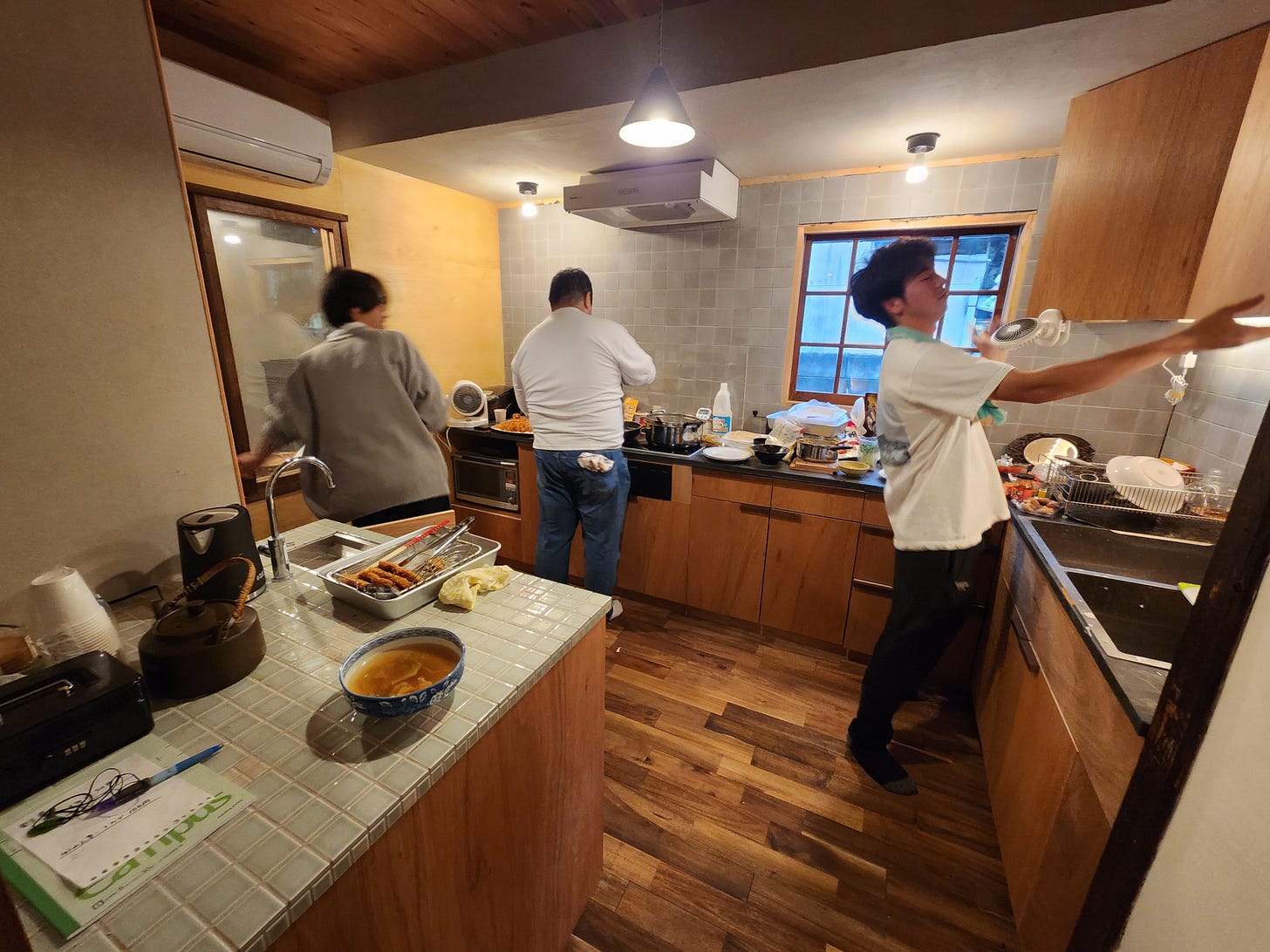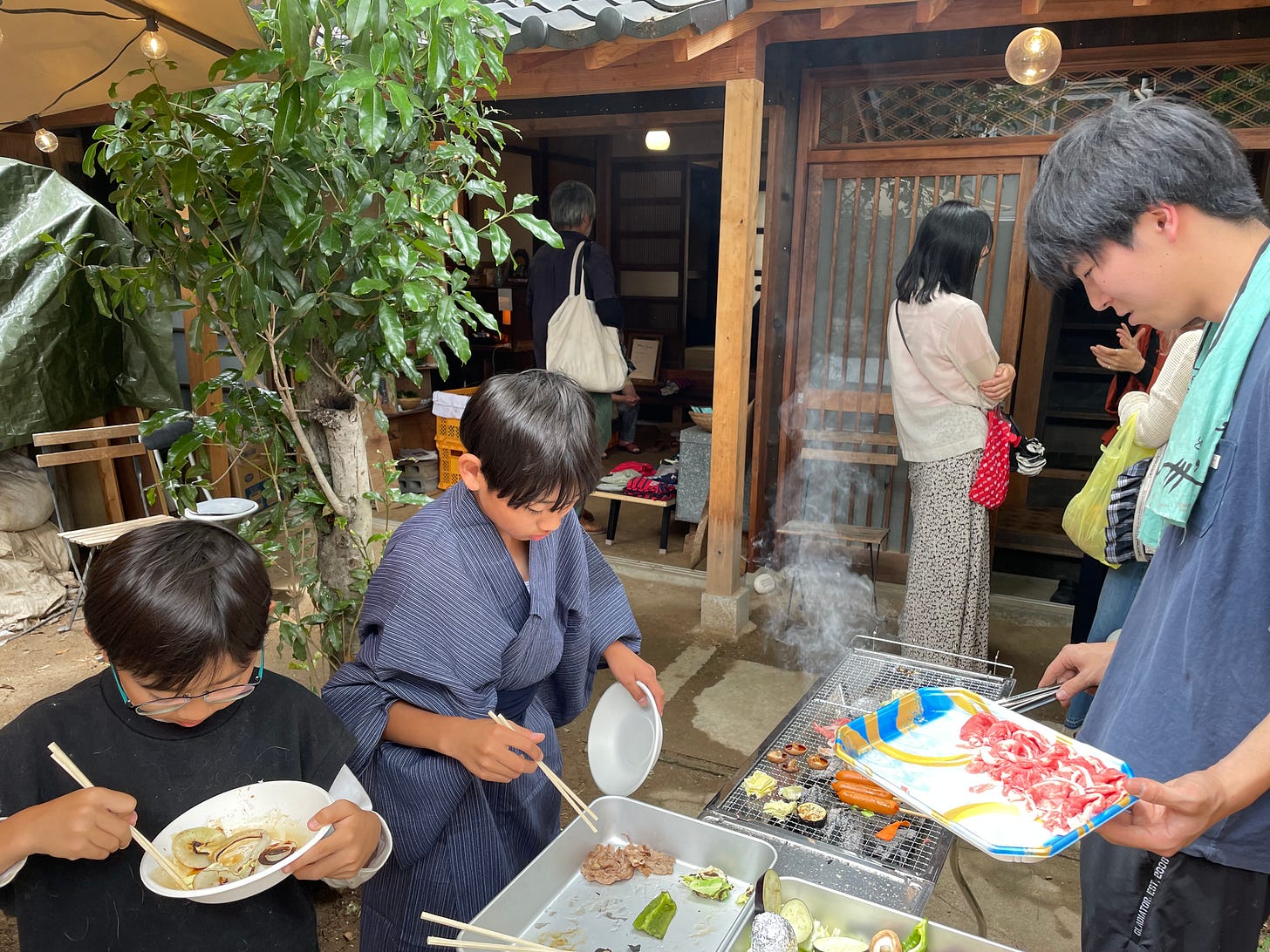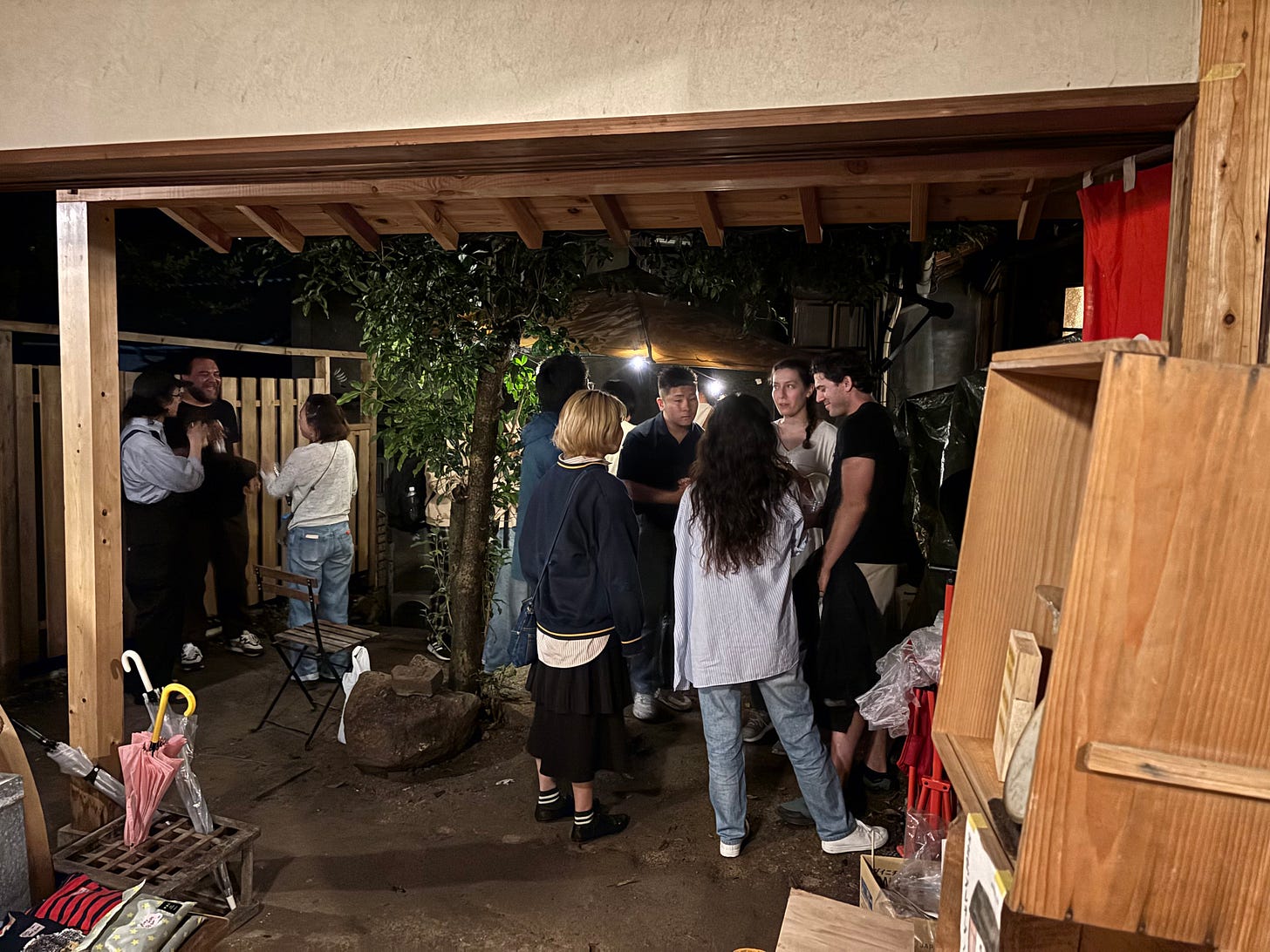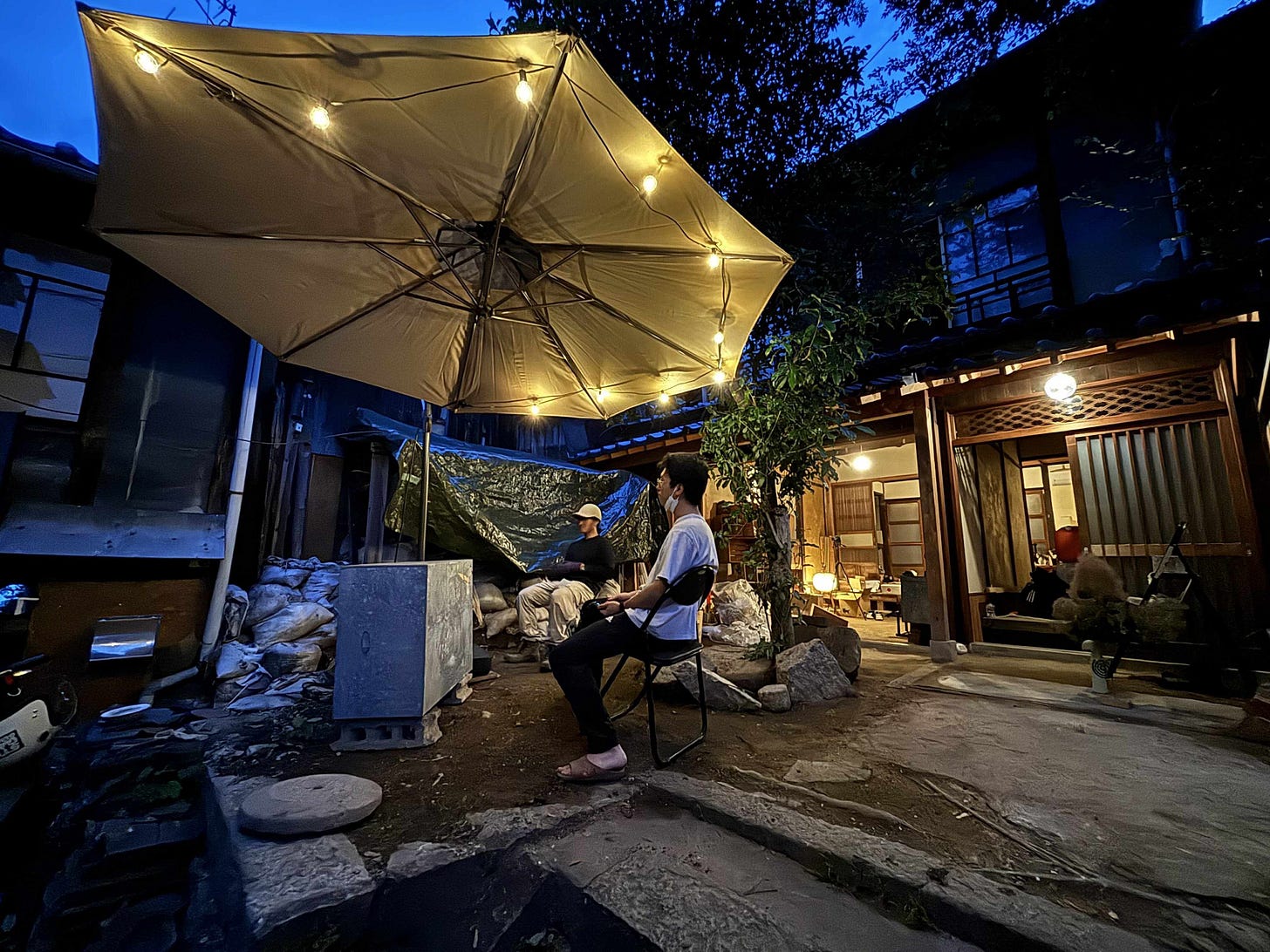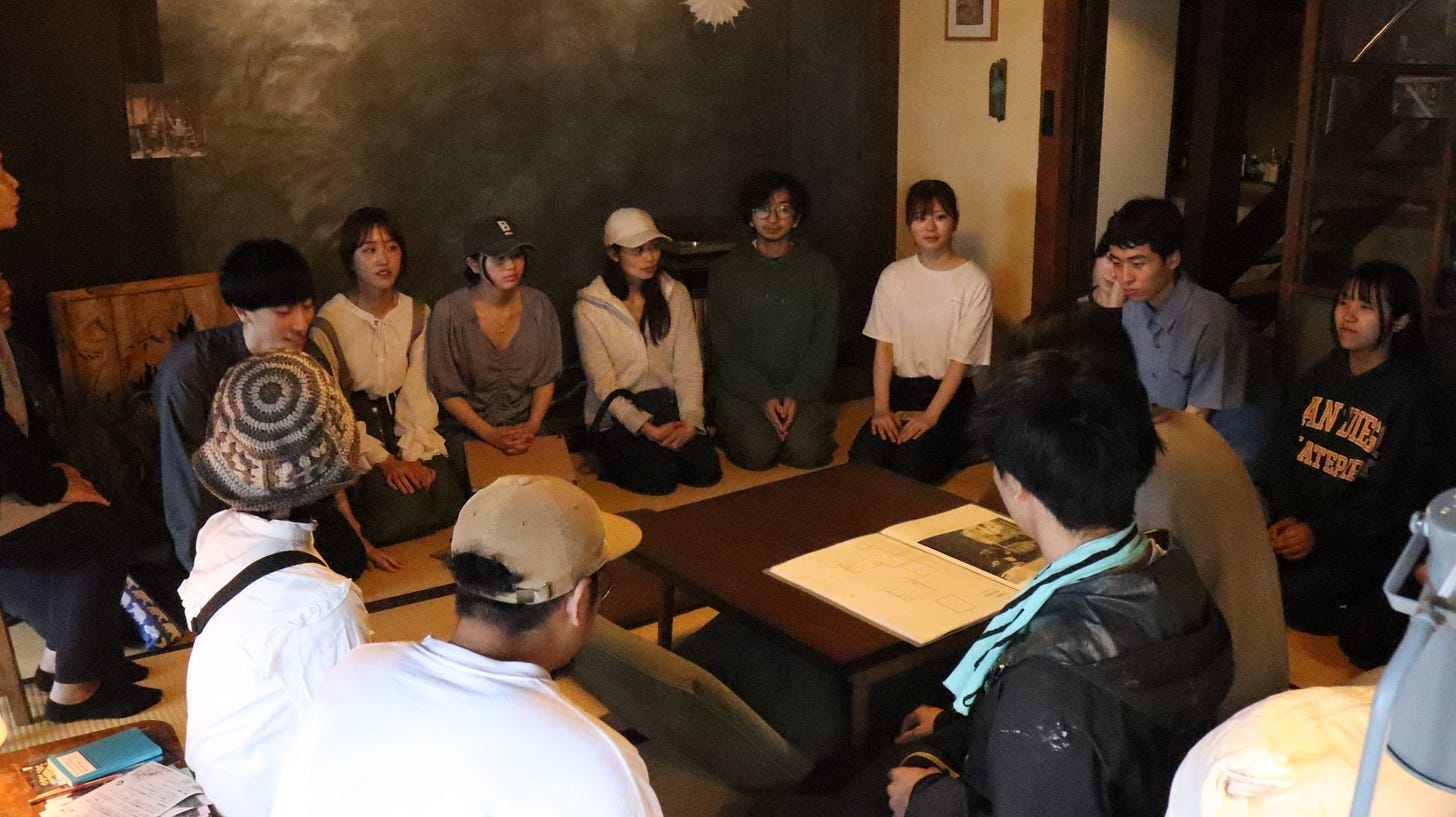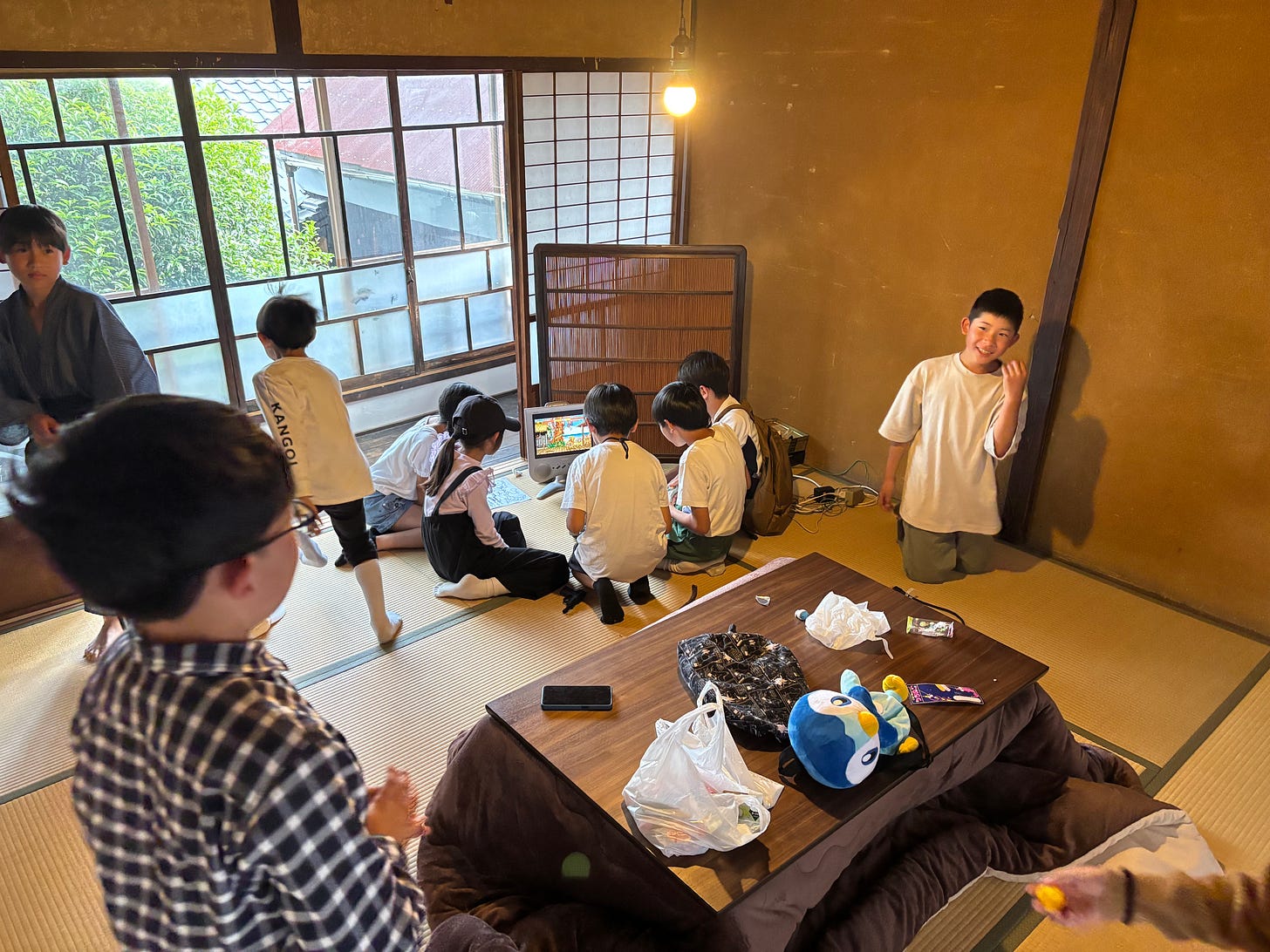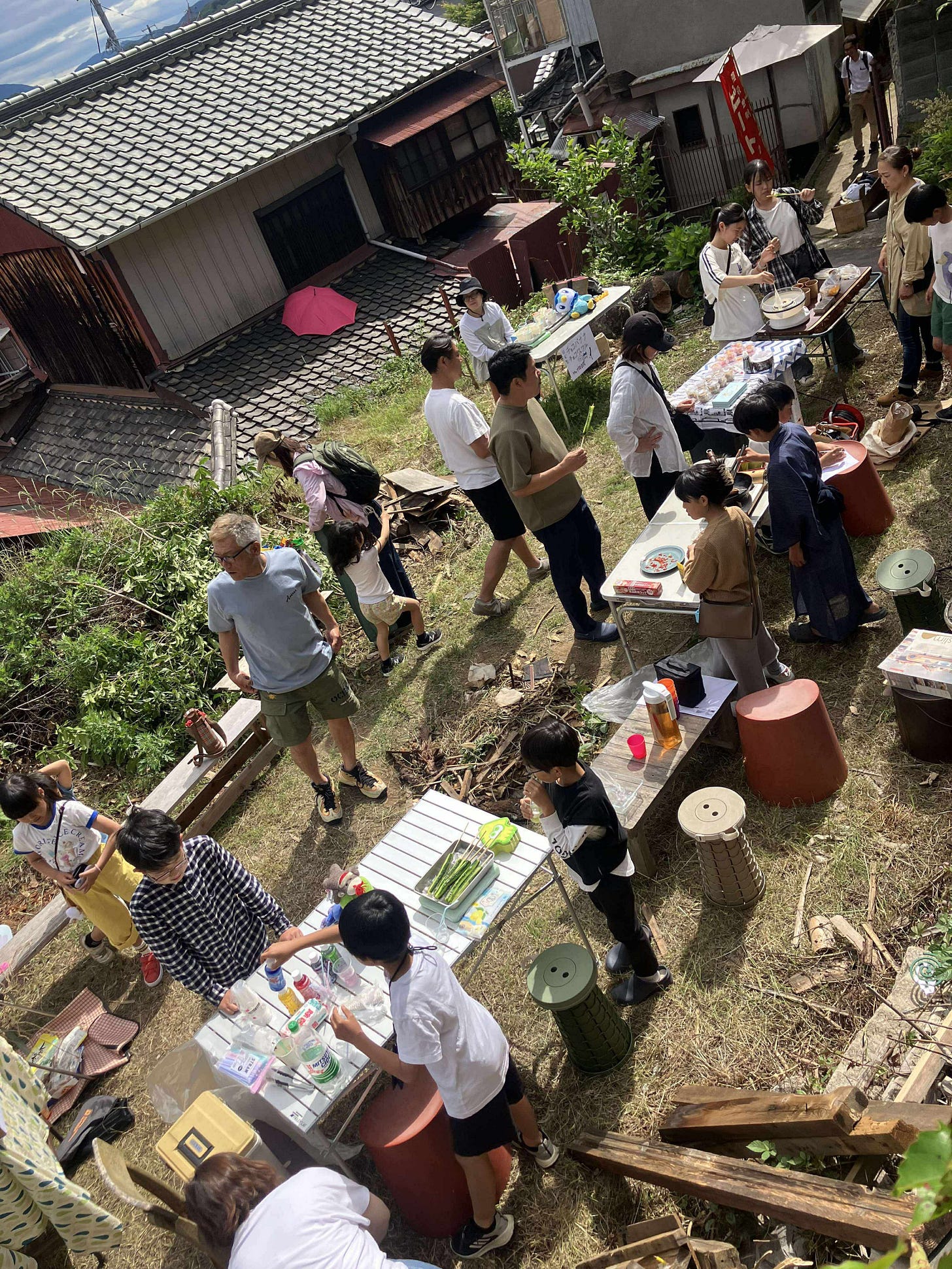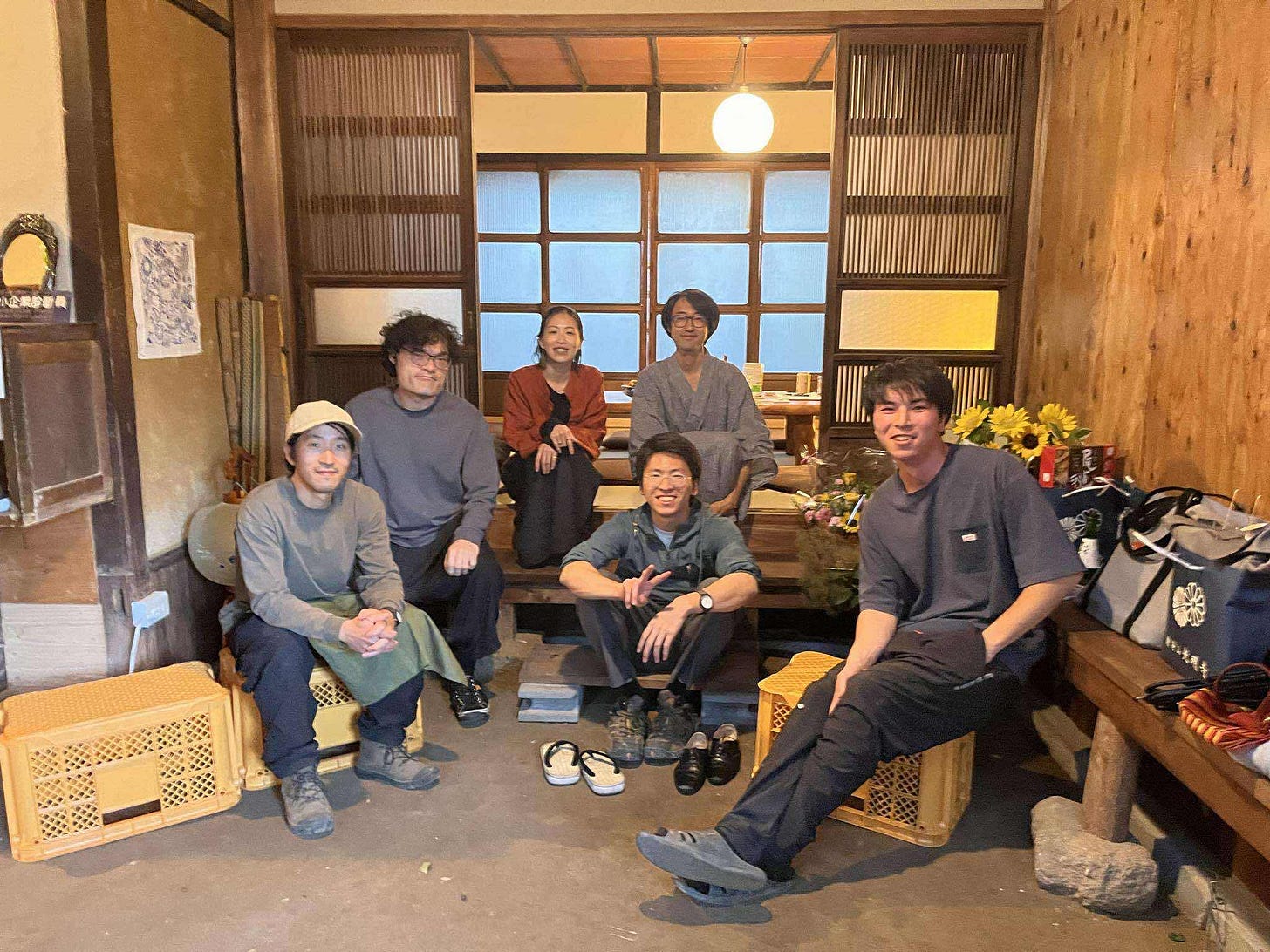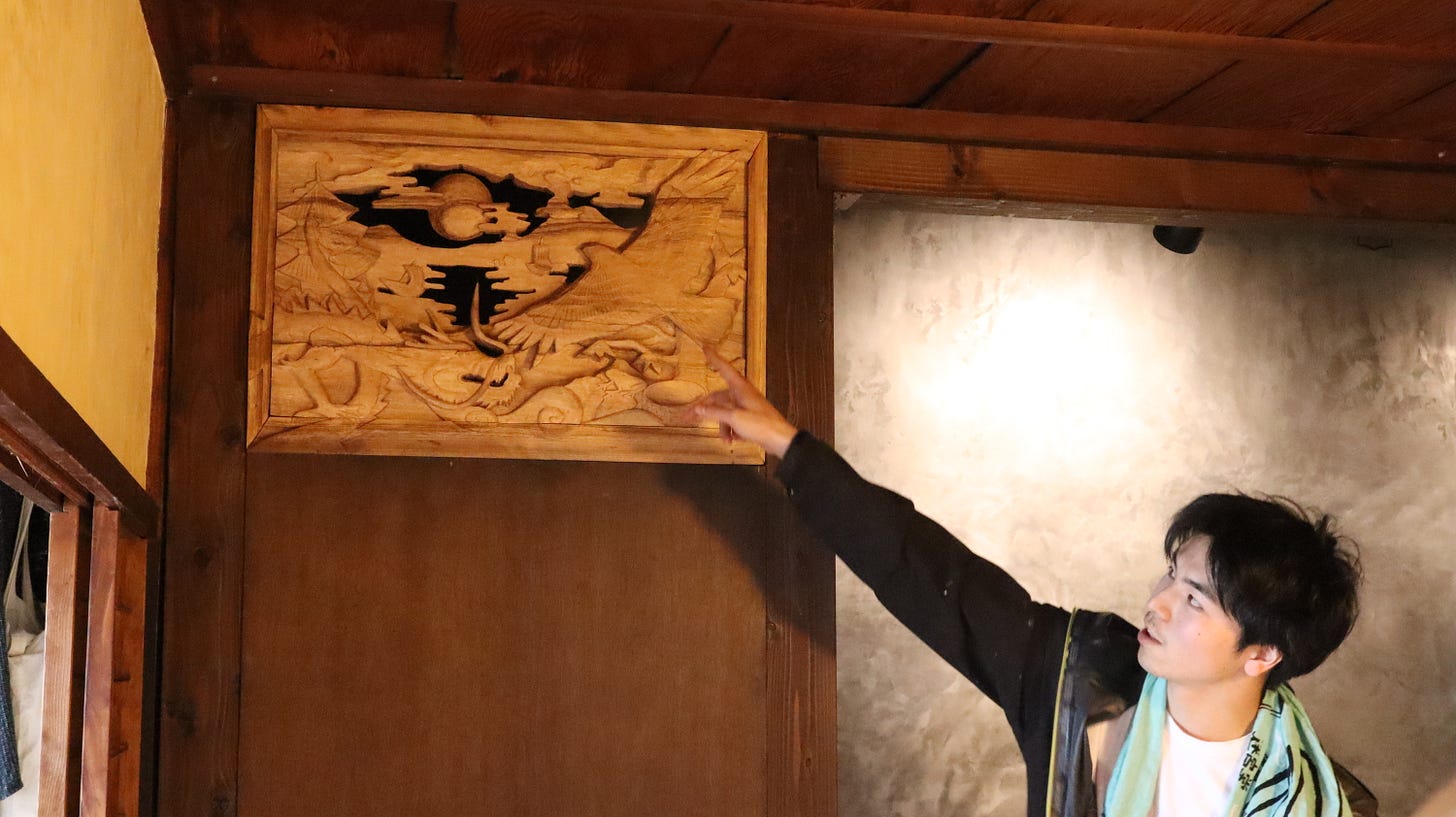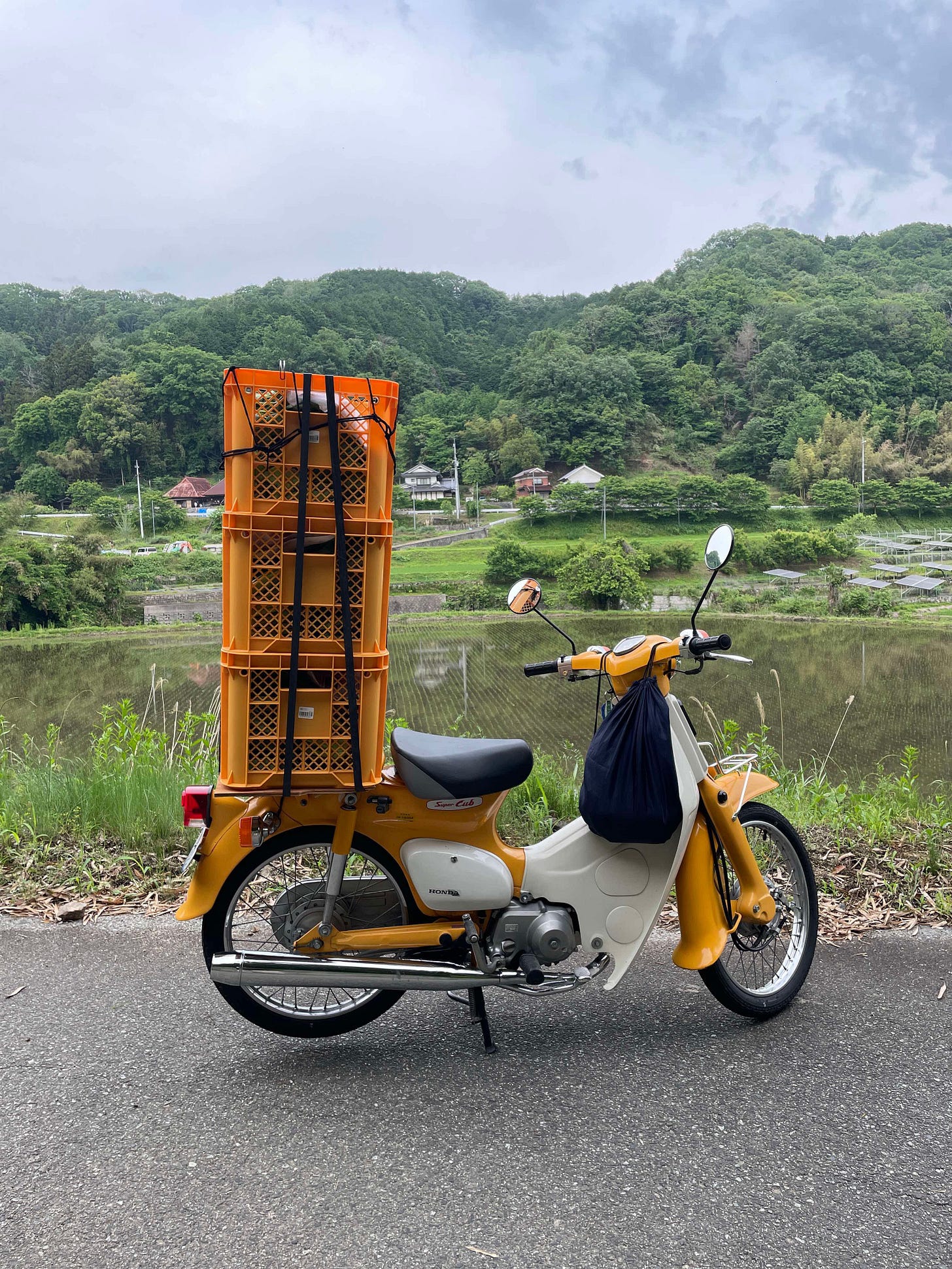Last week, my collaborators at Labyrinth House held a two-day pre-opening event to introduce the nearly finished space to our Onomichi neighbors. Dozens of people showed up to enjoy a market, coffee and ice cream, communal meals in the garden, and tours explaining the winding journey from abandoned houses to now semi-complete community space.
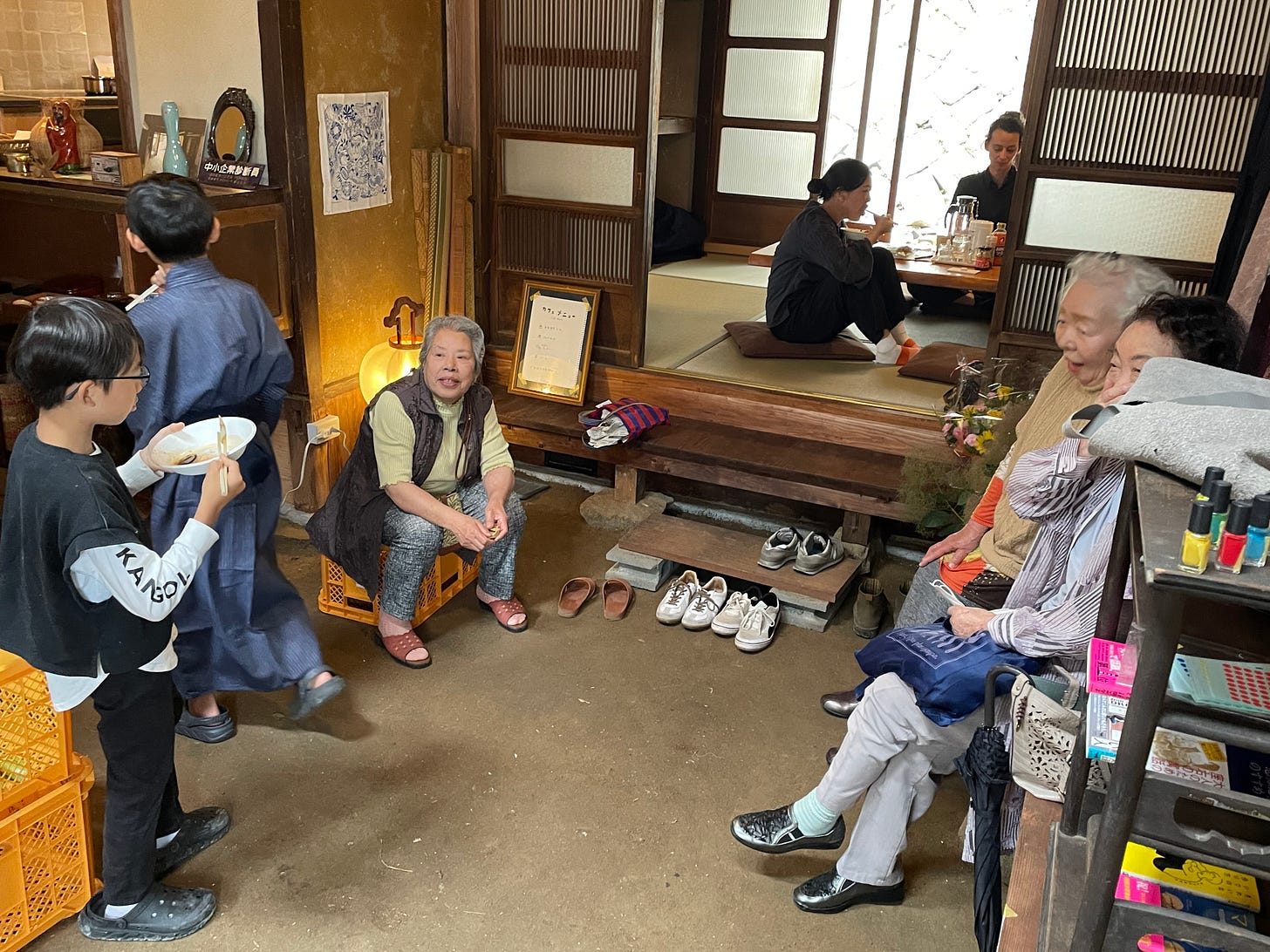
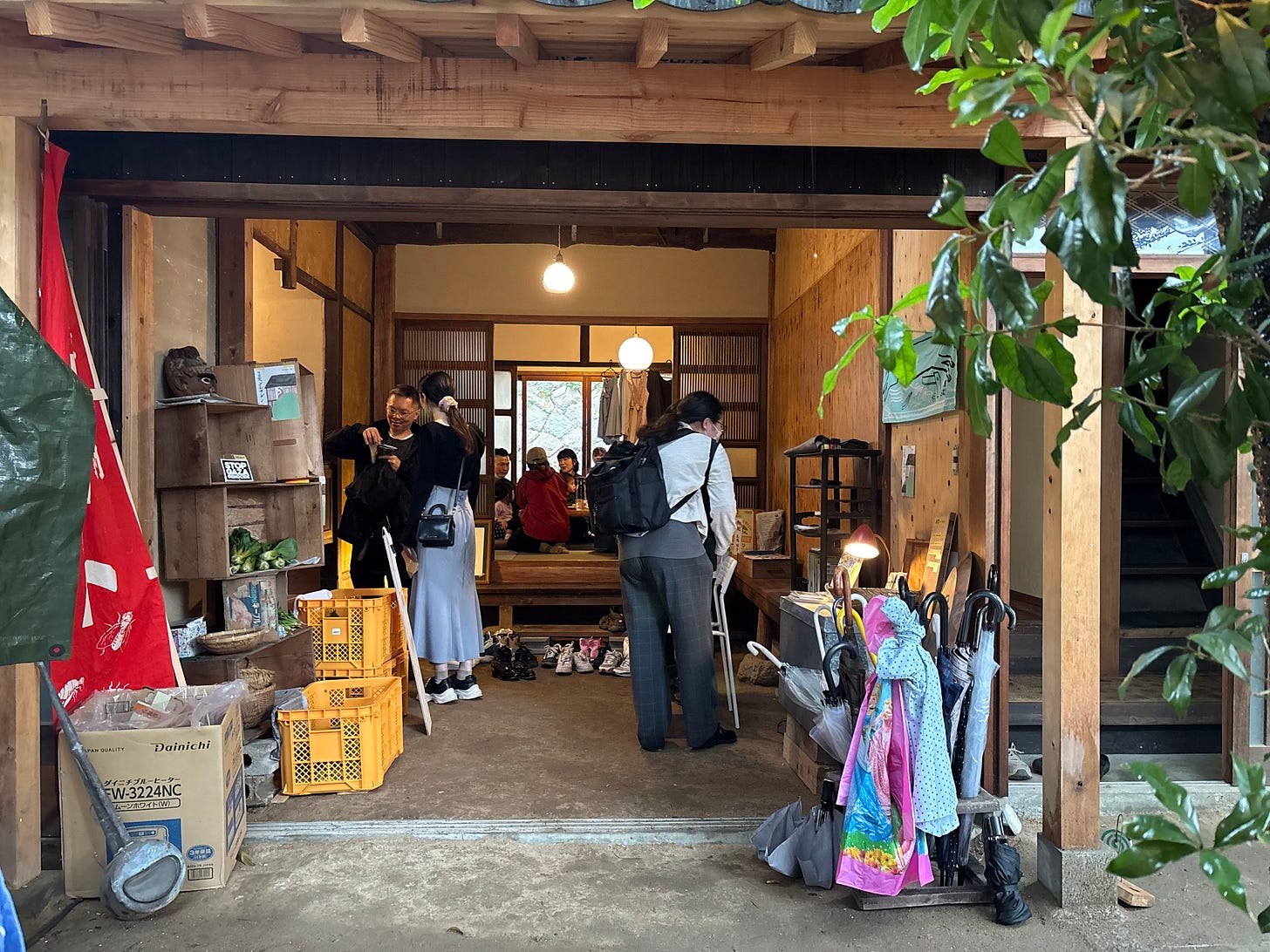
As you can imagine, I really wanted to be there as the space we’ve built takes its first steps in the world, but alas, I am still in the U.S. for a few more weeks. By all accounts, it went wonderfully, with people responding to the space in just the ways we hoped.
For the last 4 1/2 years, life has flowed around the rhythms of Labyrinth House construction: six to eight times a year between October and July, I leave behind Tokyo for a week to fully immerse myself in construction and communal living.
The space is inscribed with memories tied to seasons: a foundation poured in the freezing cold of winter, materials carried uphill in the sticky heat of early summer, bonfires and evening beers enjoyed on the engawa in the cool winds of springtime. By the fifth rotation around the sun, the chronology blurs together—I’d have to pause for a moment to remember what we did in spring 2023 versus spring 2022. But always constant through the changing seasons has been the sense of momentum, the anticipation of a dreamed-of space slowly coming into focus but still far out of reach.
That’s all to say the notion that this place we’re building might someday be complete is sort of strange. Labyrinth House will never really be finished finished—after the current stage, we’ve got a library to build, and another house to restore after that, and by the time that’s all done—2030, perhaps?—many of the houses around us will need new hands to nurture and maintain them, and the structures we’ve rebuilt will surely need repair and updates. The labyrinth can go on forever.
But the milestone we’ve been closing in on for the last year, the opening of our community store and common space, is a big one. After crowdfunding last fall, we did eight weeks of construction in the winter and spring. We installed plumbing and hardwood floors, plastered walls, built kitchen cabinets, laid tatami, and called in electricians to hook us up to the grid. Sadly, I missed the last few weeks of work and the pre-opening itself, but there is still much to do this summer and fall: build the bath, finish walls and the dirt floor, get our food license, stock our shop, landscape the garden. We’ll have a grand opening event this winter.
Creating a new commons is not just a question of building a space out of physical materials. It is a process of constructing affective bonds and a sense of belonging, opening many hearts to a place, and through that place, to others.
I like David Harvey’s definition of a commons the best: an unstable and malleable social relation between a group of people and the physical environment crucial to their livelihood. This relation shall be collective and non-commodified.
A commons exists intersubjectively. When each member feels agency and ownership, and is motivated by intrinsic and overlapping desires, we’re able to spin something up outside the market that can last over the long term. Nobody on our team is employing anyone else. Such a thing is so rare and precious in a world that is relentlessly restructured around money and commodified experiences, brands, and services.
In that sense, after twenty weeks at the helm, perhaps this was a good moment for me to put my egotistical envy (“I wanted to do that part!”) aside, and watch our team with pride as the unstable social relation molds into new configurations. At each stage of the project, different people have stepped up and sustained us. In my absence, Fu took over the reins of construction. He’s exceptionally creative, and the closest I have to a younger brother in Japan. Just 18 when we first walked up the hill together in the fall of 2020. Still hadn’t used a circular saw. Now he can (and does) build houses from scratch.
Wataru was also a crucial player these past few months. He came to visit last spring and liked what we are doing, so he packed up his stuff in Kobe and moved to town. No job, no guarantees. He quickly befriended the grandmas on his part of the hill, bought a bike, and borrowed an abandoned patch of farmland that he restored into a vegetable patch. His harvest sold out at the opening. He’s going to help run the space, and is attracted to the idea of being a “new peasant”—forging a livelihood out of many pursuits on the edge of the post-growth economy.
Paisen and Sera, Sato and Tacchan, Yu and Lili, Sho and Aki, my dear Shoko and many others—Labyrinth House exists in the minds of those who’ve created it. Together we’ve built something enduring, something that grows deeper and more substantial with every season, and that will come to mean things to many more in the months, years and decades ahead.
A big thank you again to all the supporters who read my writing here and donated generously to our crowdfunding campaign. When a half-million yen electrician’s bill comes due, or the AC installers spring a $400 fee on us for having to climb the hill (haggled that one down a bit), it is immensely reassuring to know not only that there’s money in the bank, but that there are other people out there who want to see this unordinary thing we’re creating come into being. You’re part of making this commons, too. Eventually, I will tell the story in full.

